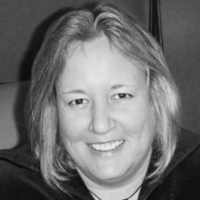This text based course is a transcript of the live webinar titled, "Assistive Technology Solutions for Independent and Productive Aging", presented by Kim Furphy, D.HSc., OT, ATP.
>> Dr. Kimberly Furphy: In addition to what Christa said, I still provide OT services to adult and geriatric population in Mercer County, New Jersey, through the visiting nurses. I am still seeing patients as an occupational therapist, in addition to teaching our future OTs. I do a lot of work with assistive technology in the home, as well as, a lot of presentations on the topic. I hope today is informative for you and I hope everyone learns a lot.
By a show of hands, how many of you are familiar or comfortable with assistive technology? I see a few hands up there or a few checkmarks. How many of you are currently working with older adults? How many of you are interested in learning about assistive technology because you want to be working with older adults? For those of you who may not have raised your hands, I am assuming you are here just to get some kind of general knowledge about assistive technology, and that is fine too.
Session Learning Outcomes
As we go through the presentation, these are the learning outcomes and objectives that that I hope to bring forth to you today. First off, recognizing and listing the strategies for locating and obtaining evidence-based resources for assistive technology provision in promoting productive aging. As we know today, there is a push for us to link what we do in practice to what is found in the research. It is becoming ever more important for us to actually know where to find those resources and find the evidence behind what we are doing. I am going to talk about some of the evidence that is out there and point you to some articles that will support some of the decisions that you will make. At the end, you can ask me some questions about other resources and places that might be good to find some of the research that is out there.
Also recognize and list the strategies used and means for providing assistive technology devices to enhance productive aging. This will go back to what assessments can we perform with our clients, as well as, what strategies should we put into place, when we are deciding what tools to use with them. Then also how do we decide what tools to use. I want you to remember though that assistive technology does change dramatically and you should know that. It seems like every couple of years you need to get a new cellphone and even though you may have gotten the upgrade to your current cellphone, there are a lot of new things that you can do with the new cellphone. Remember that AT changes dramatically and it is really important to know where to find the resources to help you decide what devices are good for your clients as well as how to use those devices.
The final thing we are going to talk about is recognizing and listing the barriers to the provision of assistive technology devices and systems that enhance productive living to older adults. I am sure most of us will say that we all run into the issue of how does it get funded. We will talk about that. I cannot say that I have all of the answers to that. In fact, I probably do not have a ton of answers for that, but I can tell you some of the strategies that I have used to try to get some of these devices that I am recommend.
